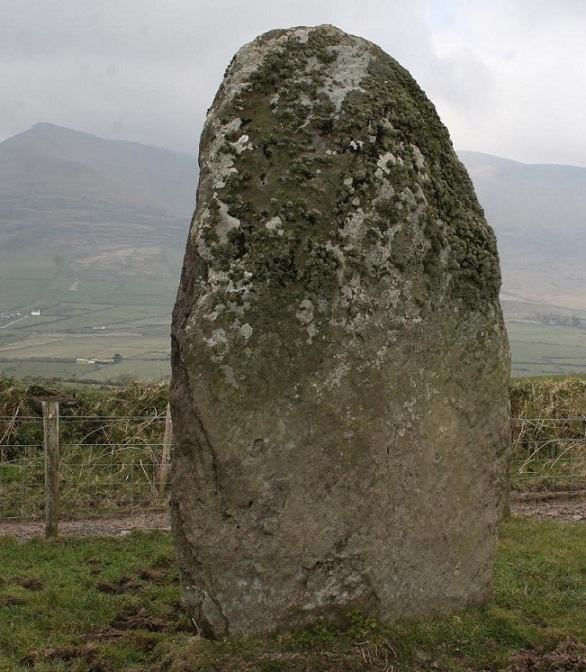Type: Rock Art
Townland: Ard MórGreat Height

Situated on a generally W facing slope, commanding an extensive view over the Lispole valley and as far W as the Blasket Islands, this site is comprised of an alignment of 3 stones, 7.55m long, with an outlier standing 60m to NE.
The tallest stone, at the NE end of the line, stands 3m high and measures 1.7m x .4m at base.
The middle stone, 1.38m further SW, is 2.2m high and 1.1m x .4m at base.
The 3rd stone, 1.65m to SW again, is almost level with its neighbour and measures 1.3m x .5m at base.
The alignment is orientated on the setting sun at the Winter Solstice (Lynch 1981, 26).
The outlier stands 2.9m high and measures 2m x .58m at base; ENE-WSW. Its NW face bears a series of rock art motifs including a cup-and-2 circles centrally positioned on the face; below this are 2 cup-and-circles, and grouped together at the base of the stone are 2 cup-and-circles with radial lines, and a cup-and-incomplete circle.
In addition there are 7 plain cup-marks and a series of linear grooves (the dotted lines on the drawing represent uncertain markings).
Immediately NW of this stone, a large boulder resting on 3 smaller ones was removed to make way for a track (local information). Based on the description and the context it is suggested that this feature was a boulder-dolmen; it is not unusual for such monuments to occur in close proximity to isolated or pairs of standing stones, although none have previously been recorded in association with a stone alignment (Ó Nualláin 1978, 75-114).
The above description is derived from J. Cuppage, ‘Corca Dhuibhne. Dingle Peninsula archaeological survey. Ballyferriter. Oidhreacht Chorca Dhuibhne’ (1986), no. 50. In certain instances the entries have been revised and updated in the light of recent research.
Site recorded by:Ted Creedon